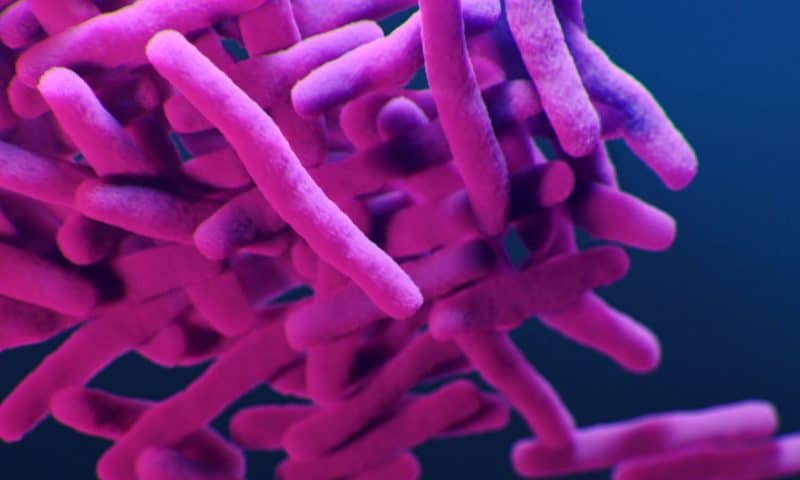There may be a solution on the horizon to combating superbug infections resistant to antibiotics. The tenacious bacteria and fungi sicken more than 2.8 million people and lead to more than 35,000 deaths in the United States each year.
An international team of researchers has found that a combination of ingredients (acidified nitrite and ethylenediaminetetraacetic acid) known as AB569 and developed by a University of Cincinnati scientist kills a bacteria (Pseudomonas aeruginosa), one of the most serious pathogens that exhibits multidrug resistance and virulence.
Their findings are available online in the scholarly journal of the Proceedings of the National Academy of Sciences of the United States of America.
AB569 kills these pathogenic bacteria by targeting their DNA, RNA and protein biosynthesis as well as energy and iron metabolism at concentrations that do not harm human cells. These were tested in laboratory mice with humanized cells. Our data implicate that AB569 is a safe and effective means that could be applied to eradicate these superbugs.”
Daniel Hassett, professor in the UC Department of Molecular Genetics, Biochemistry and Microbiology
Pseudomonas aeruginosa was applied to the lungs of laboratory mice for five days. This pathogen in humans causes pulmonary infections in patients with cystic fibrosis and chronic obstructive pulmonary disease and many other opportunistic infections. Pseudomonas aeruginosa is considered one of six ESKAPE pathogens, known by their acronym and considered among the most resistant and deadly to humans.
The ESKAPE pathogens include Enterococcus faecium, Staphylococcus aureus, Klebsiella pneumoniae, Acinetobacter baumannii, Pseudomonas aeruginosa, and Enterobacter spp. These ESKAPE pathogens typically result in hospital-acquired infections leading to illness such as pneumonia and MRSA infections. Urinary tract infections that are resistant to antibiotics are also among illnesses caused by these organisms.
“These superbugs have an ingenious mechanism of being able to resist traditional antibiotic therapies by a vast number of acquired strategies,” explains Hassett, also the paper’s senior author. “Antibiotics affect specific processes in the bacteria, but not all of them. AB569 affects multiple processes at once leaving the exposed bacteria simply overwhelmed.”
AB569 was patented in March 2018 in the United States by Hassett and initially was seen as a potential treatment for many antibiotic-resistant organisms that cause pulmonary infections in patients with cystic fibrosis and chronic obstructive pulmonary disease and many other opportunistic infections.
In addition to tackling chronic obstructive pulmonary disease and cystic fibrosis, AB569 may also be effective in addressing infections related to severe burns, urinary tract disorders, endocarditis and diabetes, said Hassett.
“Multidrug resistance, a trait of superbug bacteria, is one of the greatest threats to global public health,” says Hassett. “It is usually caused by excessive drug usage or prescription, inappropriate and often compliance-related use of antimicrobials, overuse in the chicken, beef and pork industries and/or substandard pharmaceuticals.”
Hassett says the Centers for Disease Control and Prevention considers antibiotic resistance to be among the most serious threats to human health because pathogens rapidly evolve new means to combat drug therapy leaving those who are susceptible at risk.
“Superbugs typically are found in areas of the world where there is a high population density, thereby facilitating rapid spread of such organisms. People who have traveled to areas of the world with high rates of antibiotic resistant bacteria such as South Asia and the Middle East are more likely to carry superbugs,” said Hassett. “This is why patients are often quarantined if they test positive for such organisms while epidemiologists are on their toes tracking a pathogen’s spread.”
He said these superbugs may be naturally occurring but there are some things individuals can do daily to lessen exposure such as avoiding travel to destinations that report a high incidence of infection, washing hands religiously and if you feel ill and have been to place with an outbreak, notify a physician or appropriate health authority right away.

